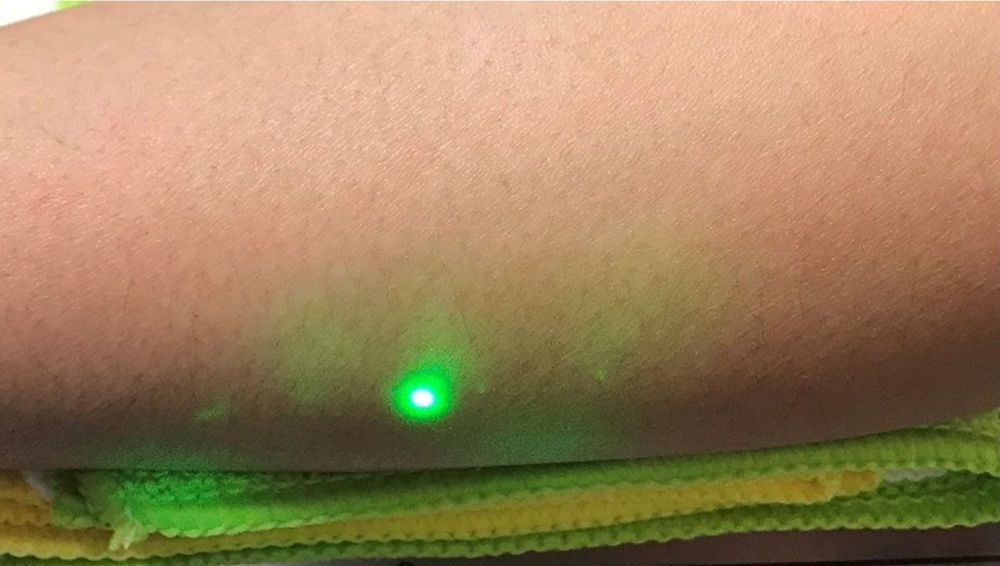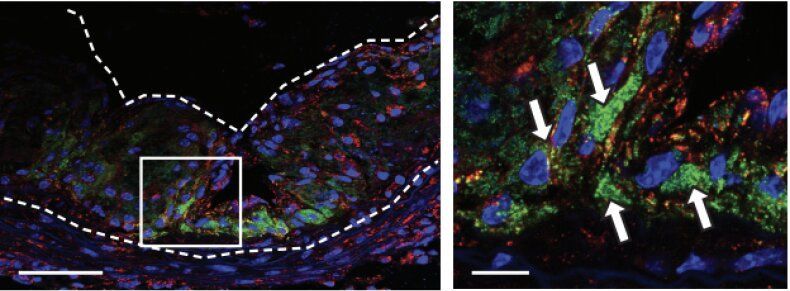Archive for the ‘biotech/medical’ category: Page 1865
Jan 28, 2020
U.S. charges target alleged Chinese spying at Harvard, Boston institutions
Posted by Brent Ellman in categories: biotech/medical, government
(Reuters) — A Harvard University department chair and two Chinese nationals who were researchers at Boston University and a Boston hospital were charged on Tuesday with lying about their alleged links to the Chinese government.
Jan 28, 2020
Researchers Transplant Lab-Grown Heart Muscle Cells Into Patient
Posted by Shane Hinshaw in category: biotech/medical
Jan 28, 2020
The Pacific Ocean is so acidic that it’s dissolving Dungeness crabs’ shells
Posted by Brent Ellman in categories: biotech/medical, economics, habitats
The Pacific Ocean is becoming more acidic, and the cash-crabs that live in its coastal waters are some of its first inhabitants to feel its effects.
The Dungeness crab is vital to commercial fisheries in the Pacific Northwest, but lower pH levels in its habitat are dissolving parts of its shell and damaging its sensory organs, a new study found.
Their injuries could impact coastal economies and forebode the obstacles in a changing sea. And while the results aren’t unexpected, the study’s authors said the damage to the crabs is premature: The acidity wasn’t predicted to damage the crabs this quickly.
Jan 28, 2020
Laser ultrasound enables diagnoses at a distance
Posted by Quinn Sena in category: biotech/medical
Generating and detecting sound waves remotely means patients can be spared the discomfort that sometimes comes with conventional ultrasound imaging.
Jan 28, 2020
CRISPR gene-editing corrects muscular dystrophy in pigs
Posted by Quinn Sena in categories: biotech/medical, genetics
Duchenne muscular dystrophy (DMD) is one of the most common and most devastating muscular diseases, greatly reducing patients’ quality of life and life expectancy. Now, researchers in Germany have managed to use the CRISPR gene-editing tool to correct the condition in pigs, bringing the treatment ever closer to human trials.
A protein called dystrophin is necessary for muscles to regenerate themselves, but people with DMD have a genetic mutation that removes the gene that produces dystrophin. That means that affected children usually begin to show symptoms of muscle weakness by age five, lose the ability to walk by about age 12, and rarely live through their 30s as their heart muscles give out.
Because it’s a genetic condition, DMD is a prime target for treatment with the gene-editing tool CRISPR. This system is prized for its ability to cut out problematic genes and replace them with more beneficial ones, and has been put to work treating cancer, HIV and forms of blindness.
Jan 28, 2020
Bill Gates in 2018: The world needs to prepare for pandemics just like war
Posted by Brent Ellman in categories: biotech/medical, health
The Centers for Disease Control and Prevention and health officials continue to grapple with the coronavirus outbreak that has killed at least 81 people in China and sickened 2,800 worldwide. And back in 2018, Billionaire Bill Gates gave a warning that the world wasn’t prepared for pandemics, which should “concern us all.”
Speaking at an event hosted by Massachusetts Medical Society and the New England Journal of Medicine (NEJM) on April 27, 2018, Gates said he believed “the world needs to prepare for pandemics in the same serious way it prepares for war.”
“This preparation includes staging simulations, war games and preparedness exercises so that we can better understand how diseases will spread and how to deal with responses such as quarantine and communications to minimize panic,” Gates said.
Jan 28, 2020
Lawrence patient held in isolation for possible coronavirus
Posted by Brent Ellman in category: biotech/medical
LAWRENCE, KS (KCTV) — Lawrence Memorial Hospital has a patient currently being held in isolation who may have coronavirus.
The hospital says the patient recently entered the United States from Wuhan, China, and showed symptoms of a respiratory illness.
Procedures are underway to treat the patient while minimizing exposure. These procedures, the hospital says, include placing the patient in isolation in a room specially designed for infection prevention.
Jan 28, 2020
Nanoparticle chomps away plaques that cause heart attacks
Posted by Kaiser Matin in categories: biotech/medical, engineering, habitats, nanotechnology
Michigan State University and Stanford University scientists have invented a nanoparticle that eats away—from the inside out—portions of plaques that cause heart attacks.
Bryan Smith, associate professor of biomedical engineering at MSU, and a team of scientists created a “Trojan Horse” nanoparticle that can be directed to eat debris, reducing and stabilizing plaque. The discovery could be a potential treatment for atherosclerosis, a leading cause of death in the United States.
The results, published in the current issue of Nature Nanotechnology, showcases the nanoparticle that homes in on atherosclerotic plaque due to its high selectivity to a particular immune cell type—monocytes and macrophages. Once inside the macrophages in those plaques, it delivers a drug agent that stimulates the cell to engulf and eat cellular debris. Basically, it removes the diseased/dead cells in the plaque core. By reinvigorating the macrophages, plaque size is reduced and stabilized.
Jan 28, 2020
Brian Kennedy Joins the LEAF Scientific Advisory Board
Posted by Paul Battista in categories: biotech/medical, genetics, life extension
 We are delighted to announce that Dr. Brian Kennedy, a Distinguished Professor in the Department of Biochemistry and Physiology at the National University of Singapore (NUS) will be joining the LEAF scientific advisory board.
We are delighted to announce that Dr. Brian Kennedy, a Distinguished Professor in the Department of Biochemistry and Physiology at the National University of Singapore (NUS) will be joining the LEAF scientific advisory board.
Professor Kennedy is an important figure in the research community, as he is internationally recognized for his research and efforts to translate those findings into therapies that could potentially slow, delay, or even prevent age-related diseases. He previously served as the President of the Buck Institute, where he still remains as a Professor.
At the NUS, he is developing therapeutic interventions that directly target human aging along with biomarkers that can validate if a therapy has worked or not. Professor Kennedy and his team have been exploring the epigenetic clock, a biomarker that measures methylation of the human genome to determine biological age. They are also investigating inflammatory biomarkers of aging using metabolomics, the study of chemical processes involving metabolites, the intermediates and products of metabolism.

















